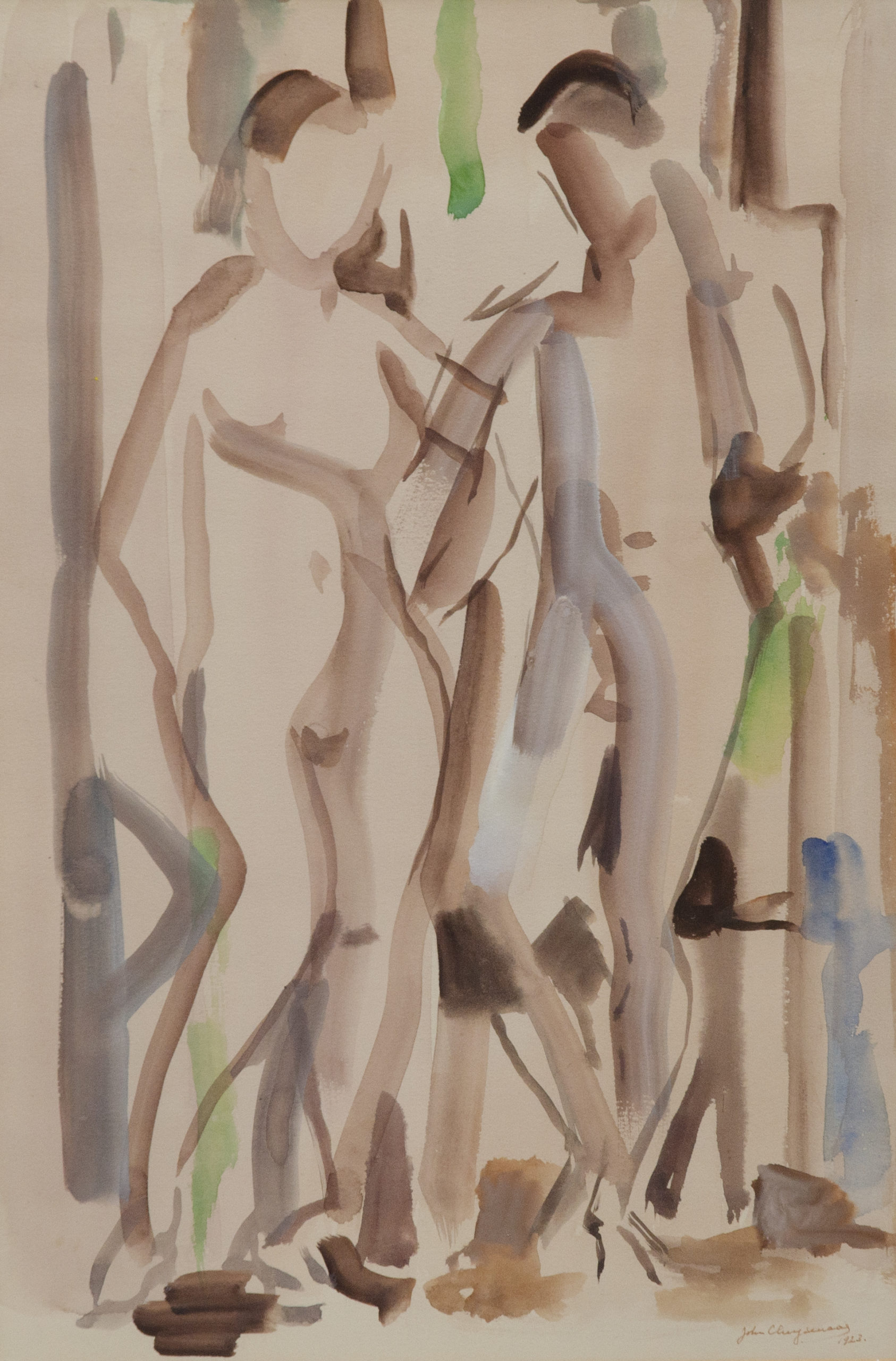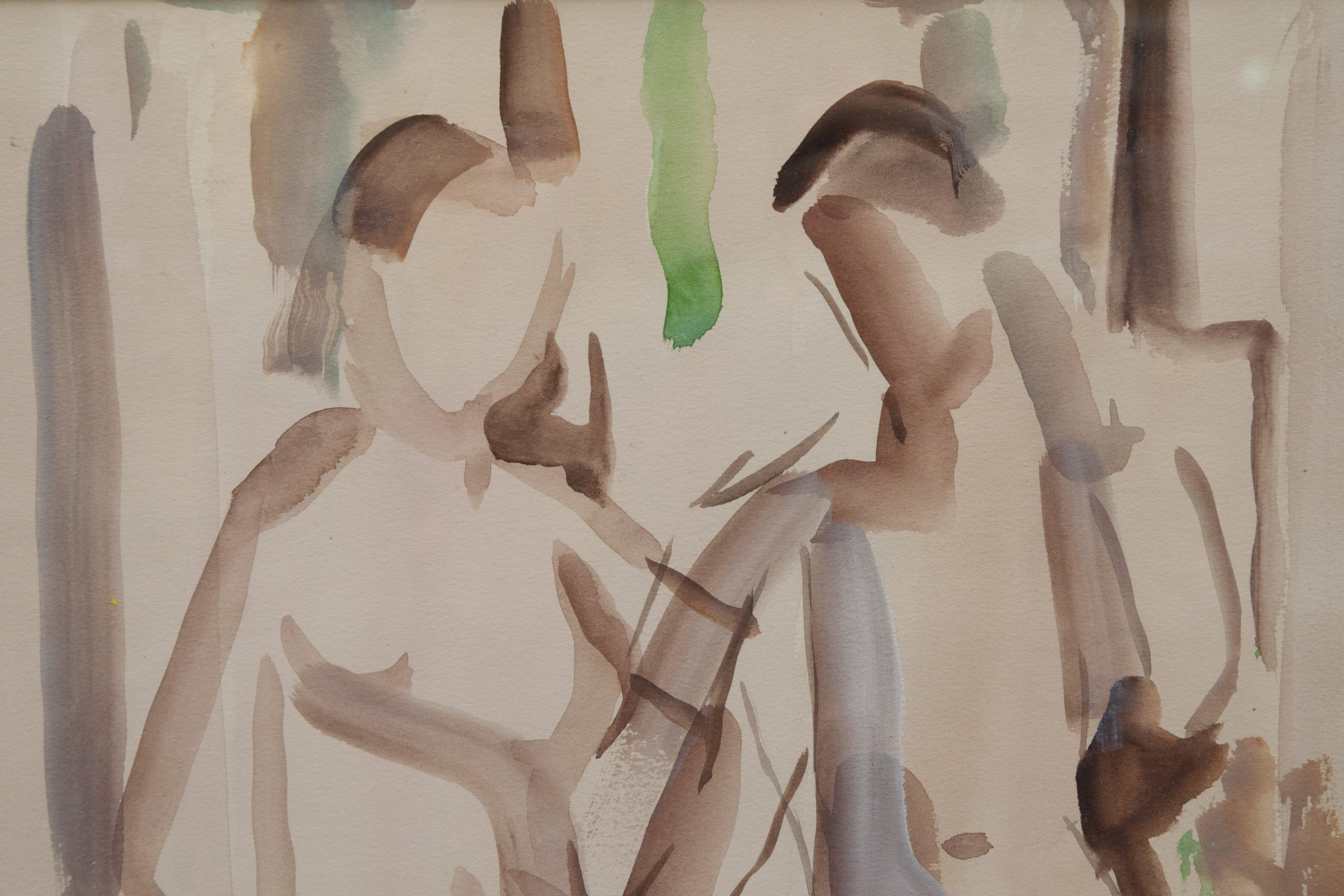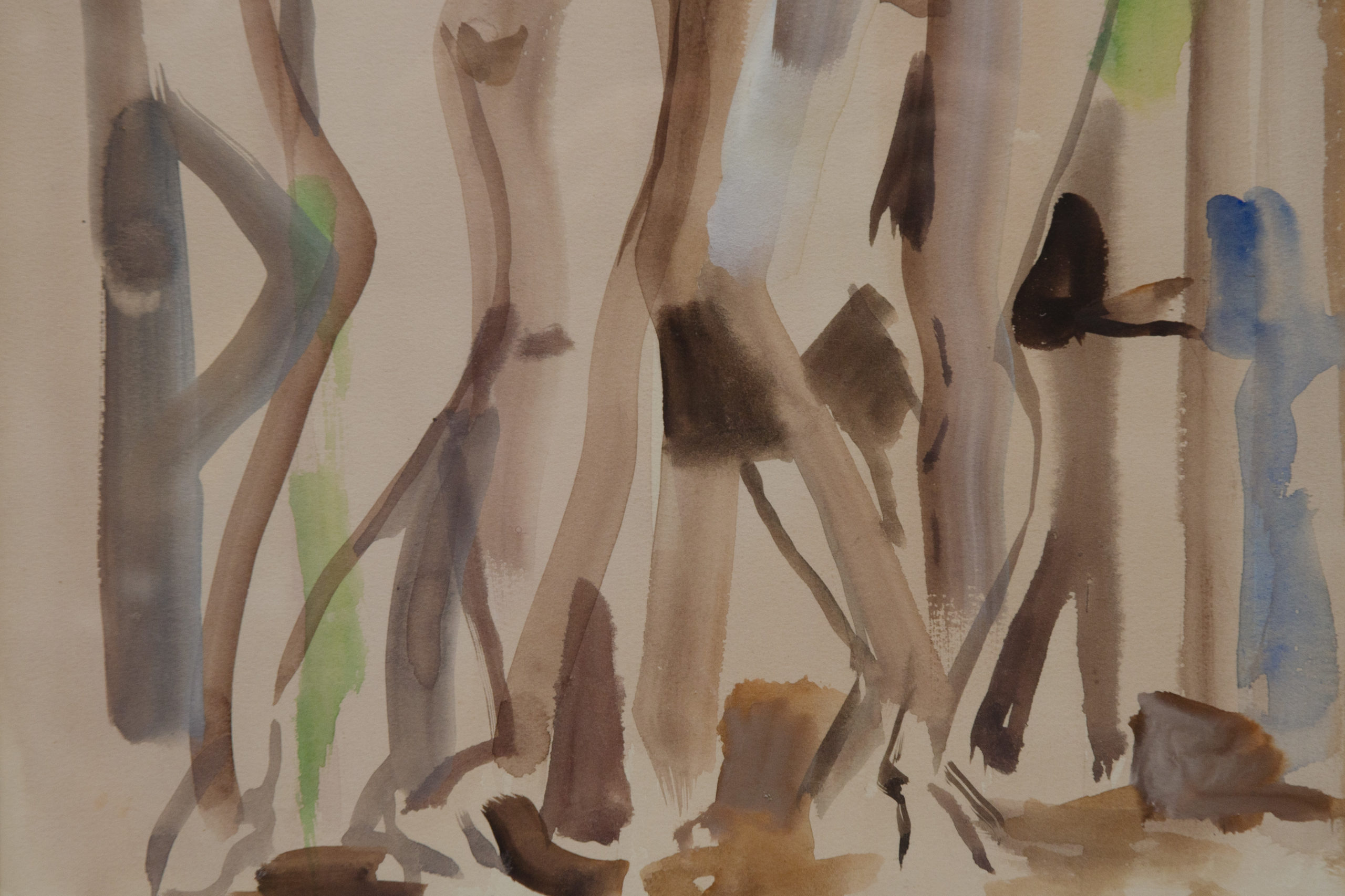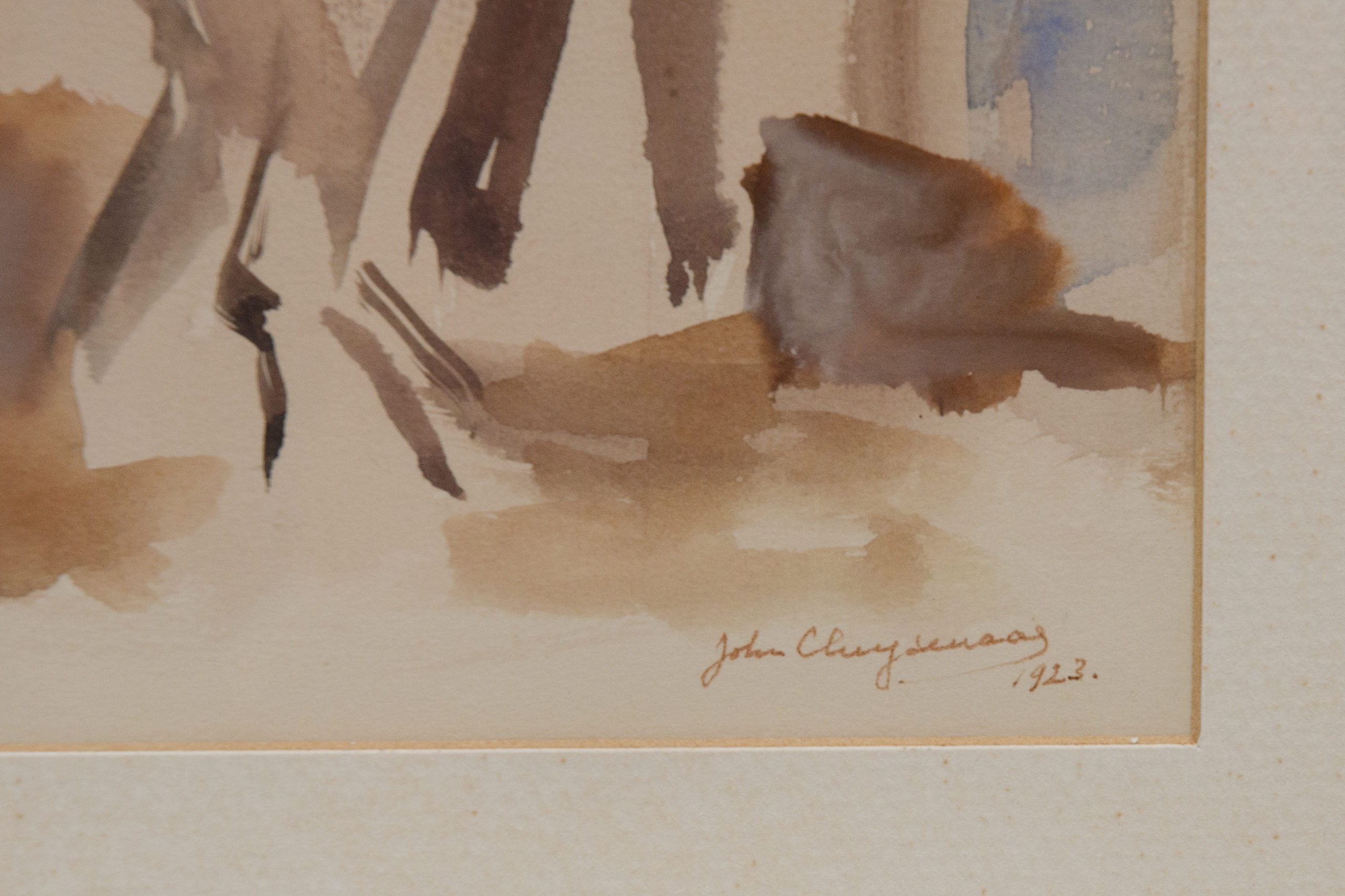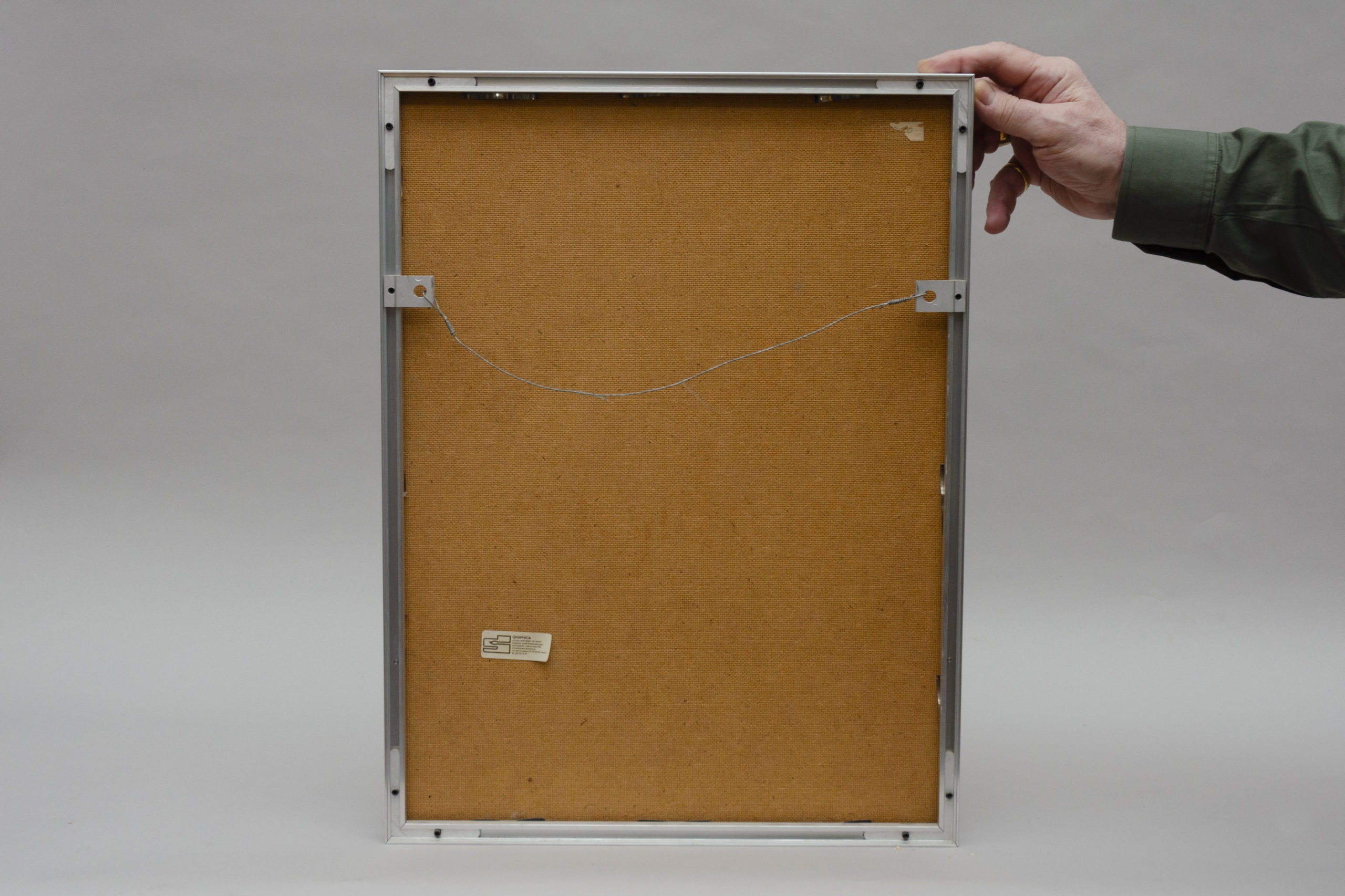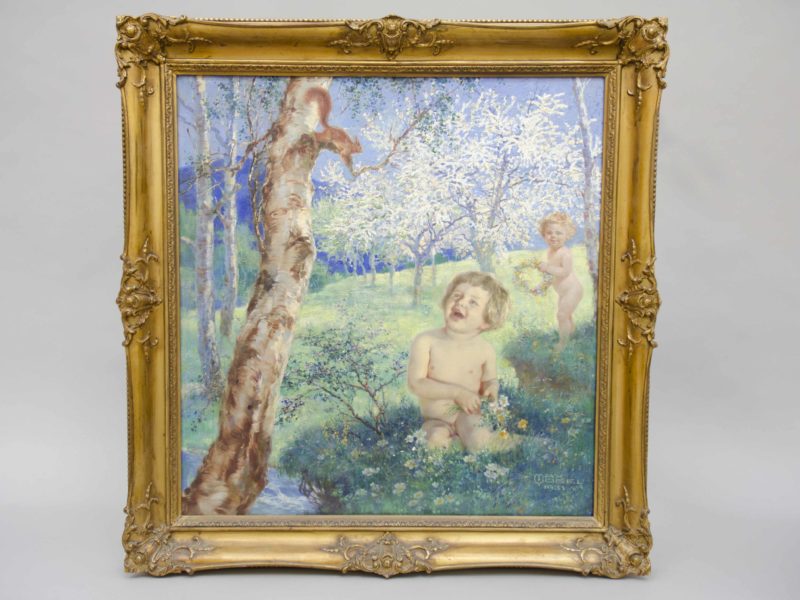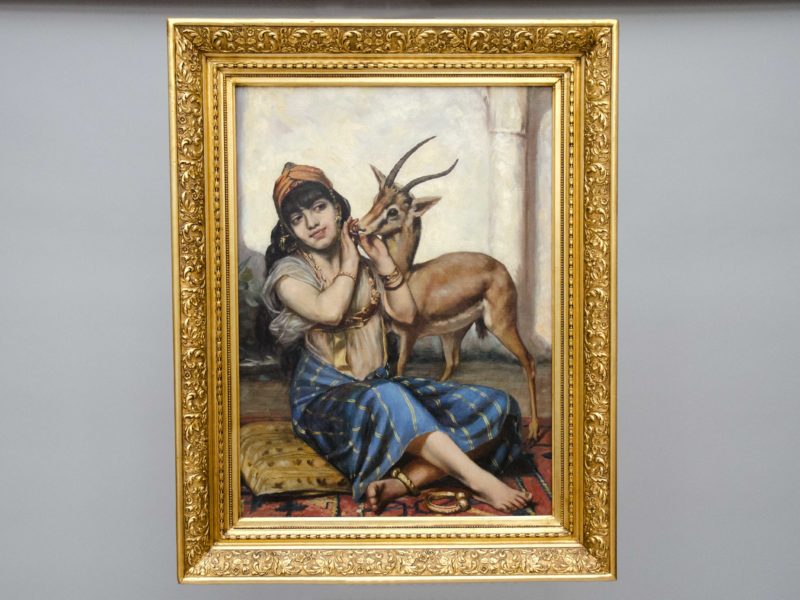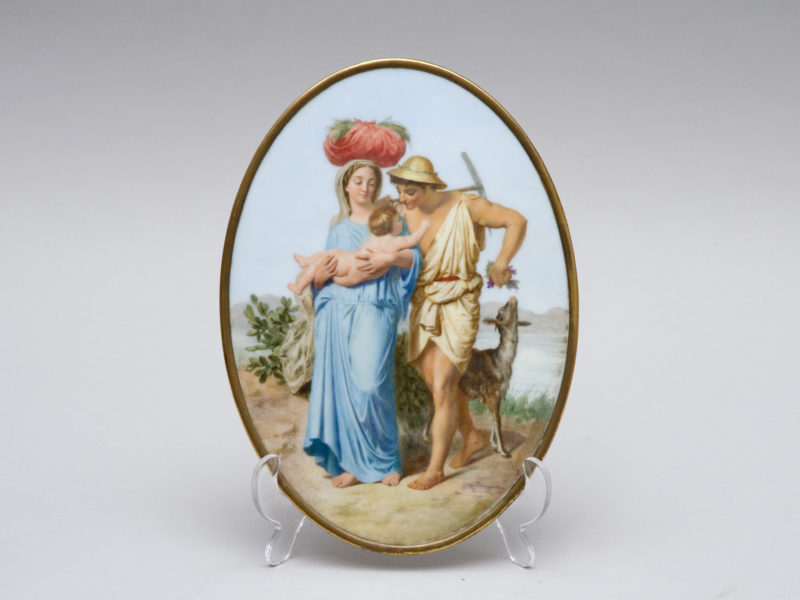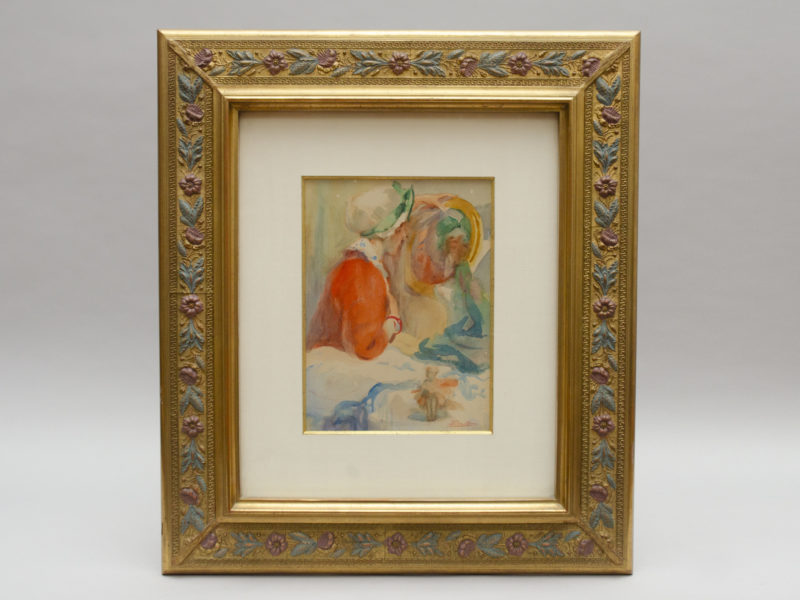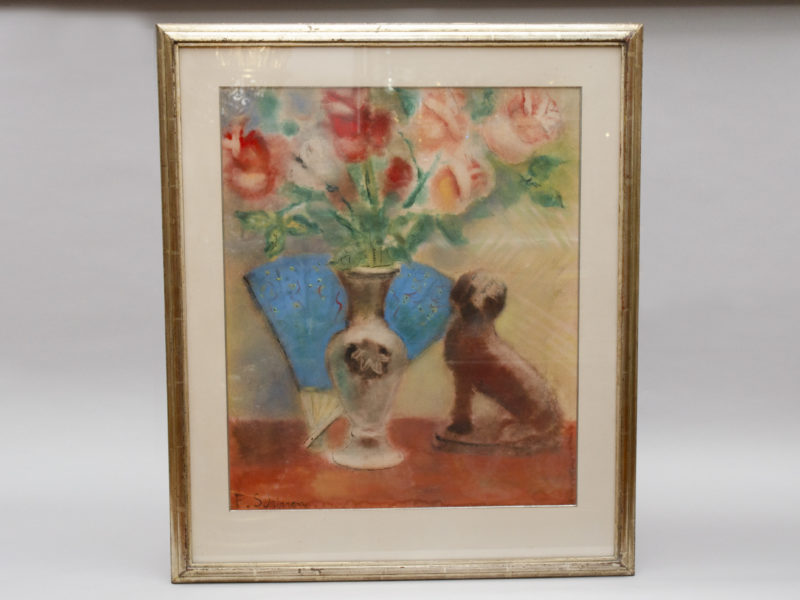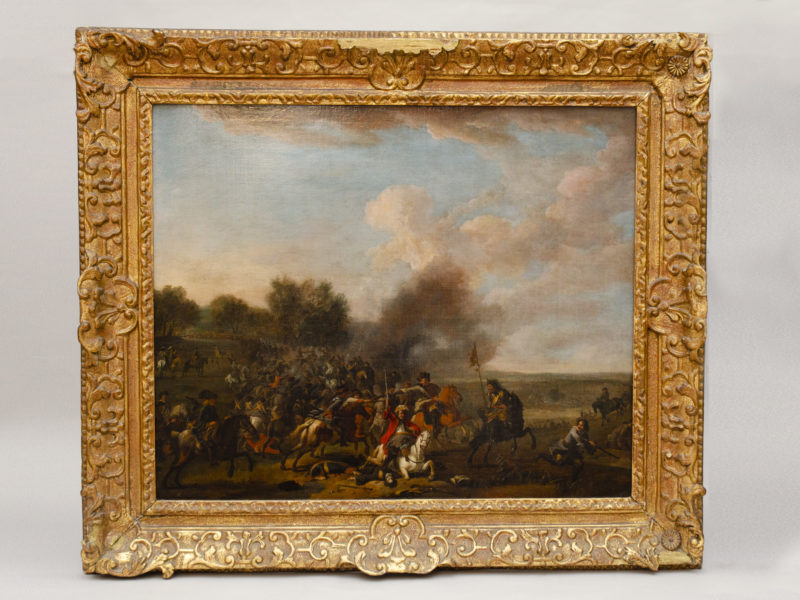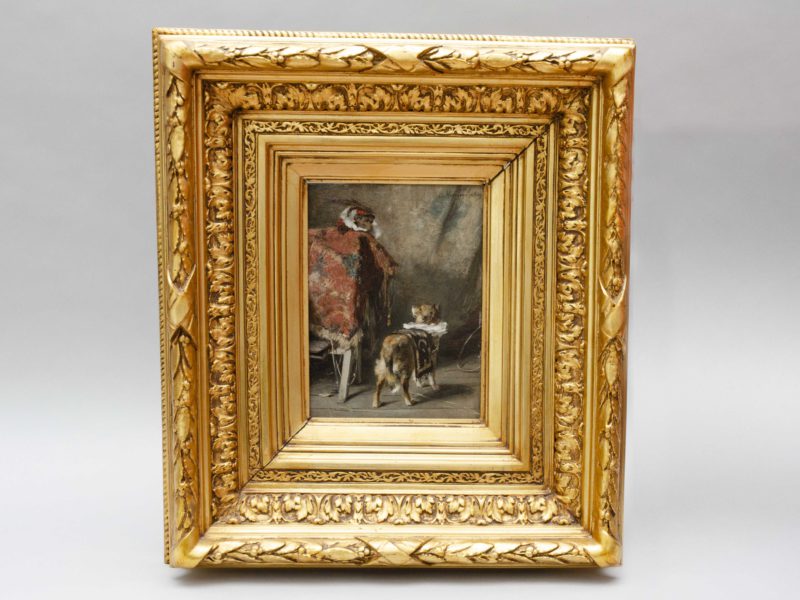Watercolor “bathers”, Cluysenaar John (1899 – 1986)
550€
In stock
Watercolour on paper. “The Bathers”, a nude couple standing treated in the artist’s expressionist style. Signed and dated 1923. Modern frame. Good condition. Work from his first figurative painting period.
Size : H 37 cm x 25 cm – H 54 cm x 41 cm
Belgian school, first part of the 20th century.
Lit: John Edmond Cluysenaar was a Belgian sculptor, painter, draughtsman and watercolourist. He was born in Uccle on 26 September 1899 and died in Noville-sur-Mehaigne on 31 July 1986.
John Cluysenaar was the son of André, a portrait painter, the grandson of Alfred, a history painter and portrait painter, and the great-grandson of Jean-Pierre, the architect who in the 19th century designed the Galeries Saint-Hubert in Brussels, one of the first covered shopping arcades in Europe, the Brussels Conservatoire and the Place du Congrès. John Cluysenaar grew up in an artistic family environment: he drew and painted with his father in Brussels from an early age. The 1914-1918 war took him to London. Shortly after the end of the war, he created a commissioned sculpture there, without the slightest training!
Back in Brussels, he quickly became a sought-after sculptor, winning the Prix de Rome and the Prix Godecharle in 1924 for the group “Le Baiser” (The Kiss), now in the Musée d’Ixelles. 1939, the year his father died, marked a turning point in John Cluysenaar’s life. He gave up sculpture to devote himself exclusively to what he had always wanted to do: paint!
Surprised by the Second World War in England, he remained there until 1955. It was there that he produced his first pictorial works: expressionist watercolours in raw contrasting colours. Soon afterwards, John Cluysenaar adopted oil painting, working with pure colours, lines and shapes, and already faces were coming to life at the end of his brushes.
As he approached the 1950s, and the “second generation of abstraction”, John Cluysenaar continued his search to express what he felt confusedly within himself, and he explored automatism as a means of producing totally abstract paintings and forming a link between the conscious and the unconscious; the lyrical abstraction works that John Cluysenaar created at this time have a very dense texture, a dynamic of ebb and flow, an exuberance of writing and curves in movement, moulded directly into the paste. We also sense that the sign is invading: the nervous, vibrant strokes separate and come together, traces of every tremor of the hand, of every message from the unconscious.
Gradually, however, the painter abandoned this abstract work and devoted himself to the theme of his life: faces.
(Extract from the text presenting the John Cluysenaar exhibition at the Musée de la Famenne and the Maison de la Culture Famenne-Ardenne, in Marche en Famenne – September 2006; to be read in full on the Cluysenaar Foundation website)
In stock
Contact us
